If you’ve ever seen a sunflower reaching for the sky, you know how beautiful and majestic it can be. But sunflowers also come with their own unique set of challenges when it comes to care- like petals falling off prematurely! This isn’t something most gardeners want in their garden beds, so we wanted to take a closer look at what causes this, what signs may hint that your flowers are affected by it, and remedies for the problem. Continue reading our comprehensive guide about what to do when sunflower petals start falling off.
Sunflower Petals Falling Off – Why It Happens
Part Of The Life Cycle
Sunflowers are annual plants, and the shedding of their petals is a natural part of their life cycle. Sunflower blooms typically last anywhere from one to two months, depending on the variety. During this time, petals will begin to drop off as the flower matures. This indicates that the sunflower’s bloom season is coming to an end and it will soon be ready for harvesting. [1]
Environmental Factors
Extreme temperatures (both hot and cold) can cause sunflower petals to fall off prematurely. High winds and rain can also damage delicate sunflower petals, causing them to fall off earlier than expected. The falling off of your sunflower petals could be related to any recent weather-related event that occurred in your region.
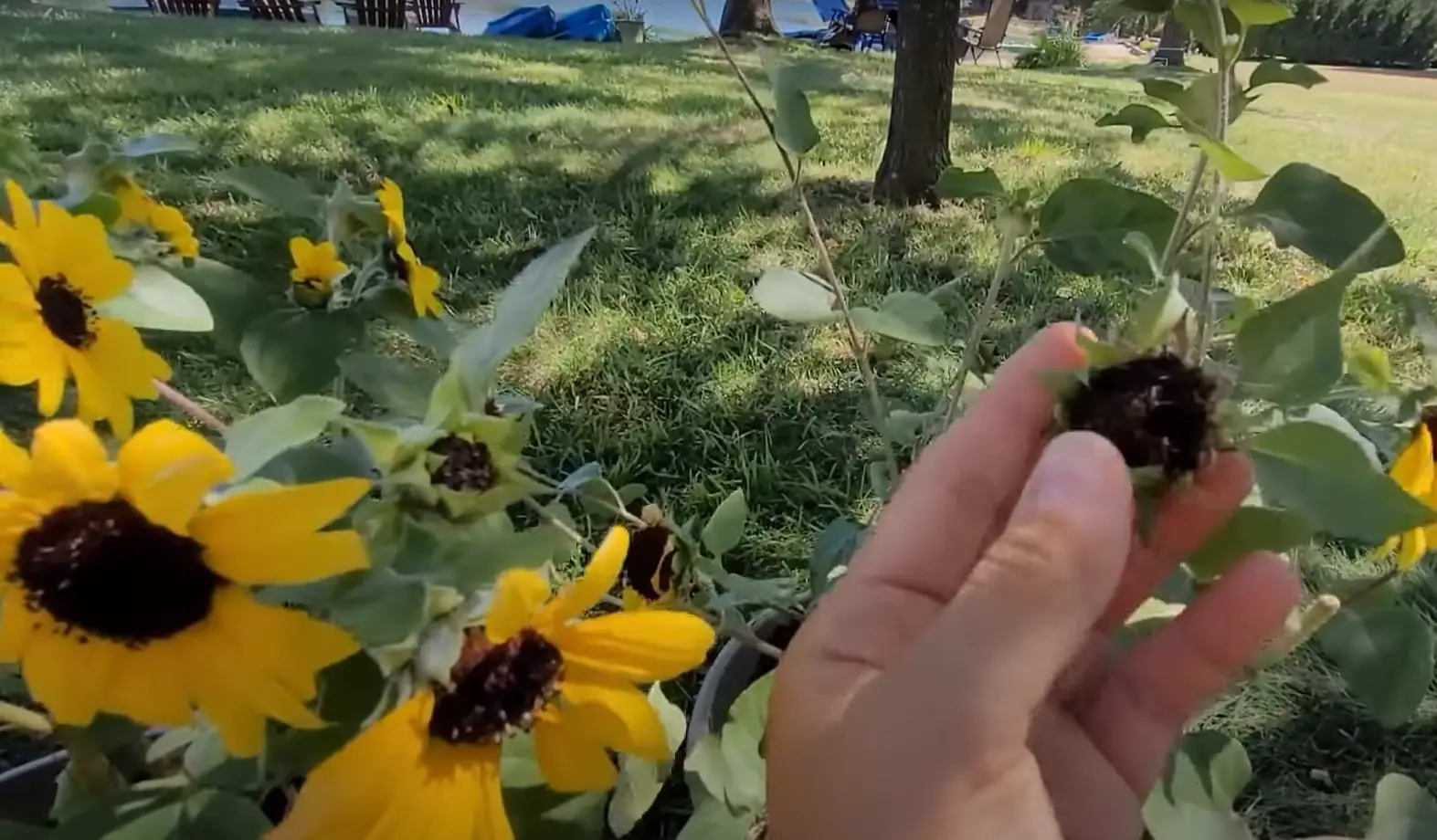
Pests and Disease
Some pests can also result in the premature falling off of petals. Aphids, thrips, spider mites, and leaf miners are all insects that feed on sunflower plants and can cause petal drop. Additionally, a variety of fungal diseases such as Botrytis blight or powdery mildew can attack the plant’s flowers and cause them to fall off. If you suspect your sunflowers have been attacked by pests or disease, be sure to take appropriate action such as treating with an insecticide or fungicide.
Nutrient Deficiency
Lastly, nutrient deficiencies in the soil may contribute to petal drop. In order for sunflowers to grow and bloom properly, they need sufficient quantities of nitrogen, phosphorus, and potassium. If the soil is lacking in these nutrients, the plant may be unable to produce enough energy to sustain its petals. Make sure your sunflowers are getting the nutrients they need by regularly fertilizing them throughout their life cycle. [2]
There could be various reasons for the falling off of sunflower petals. From environmental factors like extreme temperatures or high winds, to pests and diseases that attack the flowers, to nutrient deficiencies in the soil – any of these can cause petal drop. Fortunately, most of these issues can be addressed with proper care and maintenance. With a bit of effort, you can ensure your sunflowers have all the necessary resources for optimal growth and blooming.
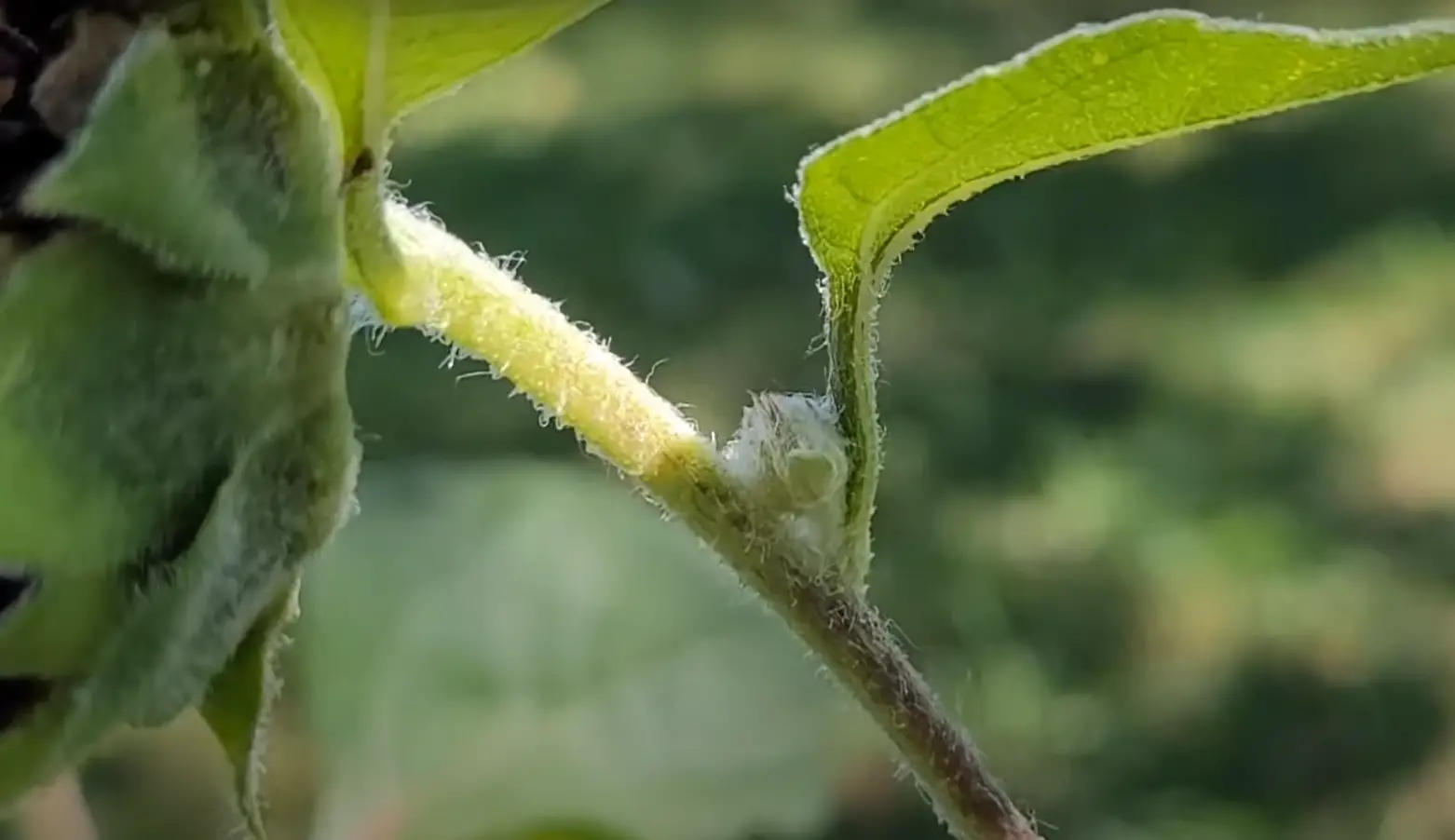
What Should You Do After The Petals Fall Off?
To prevent future petal drop and maintain plant health, it is important to take proper care of the plant after the petals have fallen off. To do this, provide plenty of light and air circulation around your sunflower plants. You should also make sure to water them regularly, as they need lots of moisture in order for their blossoms to stay vibrant. If there are any pests or diseases affecting your sunflowers, take steps to get rid of them as soon as possible.
With proper care and attention, you can ensure that your sunflower plants will remain healthy and produce beautiful blooms for many years to come. [3]
If your sunflower plants have already lost their petals, there is still hope for a beautiful bloom! Once the petals fall off, simply prune back any parts of the stem that seem to be wilting or dying and continue to provide your sunflowers with plenty of light and water. With adequate care, you should begin seeing new buds appear in just a few weeks’ time. So don’t give up on your beloved sunflower plant just yet! With some patience and effort, you’ll be rewarded with another gorgeous bloom before long.
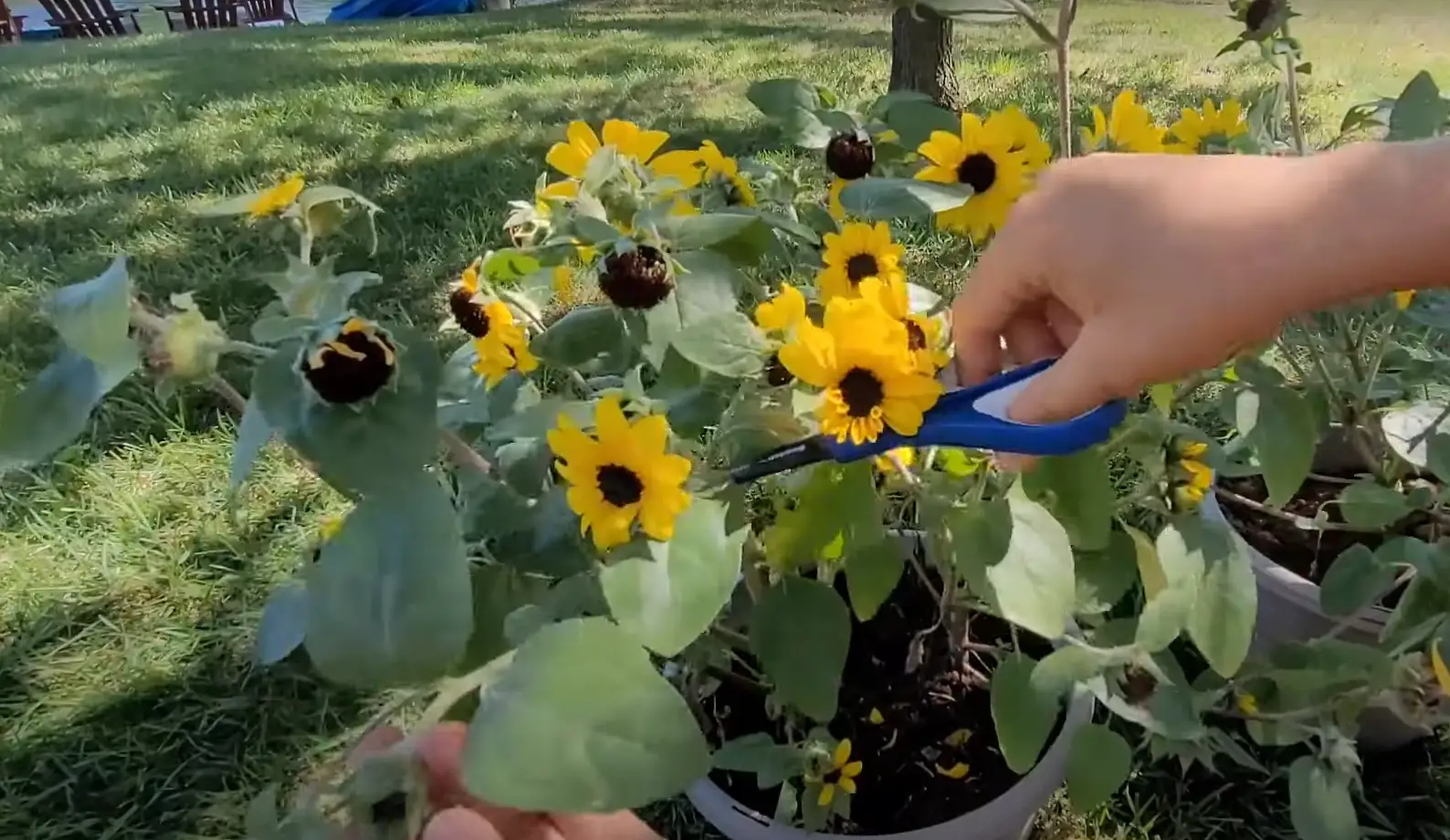
How To Get Rid Of The Bugs?
If you’ve already identified the cause of the petals falling off, it’s time to get rid of the pests. Depending on what type of bug is plaguing your sunflower, there are many ways to go about eliminating them.
One option is to use insecticides and fungicides. These chemicals can be effective in killing pests and preventing their return. However, it is important to read the labels carefully and follow all instructions when applying these products. Also, keep in mind that insecticides may harm beneficial insects like pollinators or honeybees if used incorrectly.
Finally, regularly inspecting your plants can help catch any potential infestations early before they become a major problem.
No matter which pest control method you choose, it’s important to take action quickly when petals start falling off your sunflowers. This will give you the best chance of saving your flowers and keeping them healthy for years to come. [4]
When Should I Cut Off My Sunflower Heads?
The timing of when to cut off sunflower heads varies depending on the type of sunflower and variety. For most varieties, it is best to wait until the flower has fully bloomed and faded before cutting off the head. If the head is cut too soon, it will not have a chance to produce viable seeds.
If you are growing your sunflowers for their edible seeds, wait until after they have started to change color before cutting them back. Generally, this occurs 2-3 weeks after blooming. Once the center petals of the flower turn brown or black, and some of the discs along the edge start to curl up, it’s time for harvest.

In Which Season Does Sunflower Grow?
Sunflowers typically grow in the summertime when days are long and warm. Depending on where you live, they may be planted starting in late spring and flower until early fall. Sunflowers need full sun to thrive so it is best to plant them in an area that has at least six hours of direct sun per day. If you live in a cooler climate, you may want to wait until temperatures consistently reach above 60°F (16°C). Once planted, regular watering and fertilizer will help your sunflowers reach their full potential. There are many varieties of sunflower available so do some research to find one that fits best with your gardening goals. With proper care and attention, you can enjoy watching your garden burst with vibrant sunflowers all summer long.
When your sunflower begins to wilt and the petals are starting to fall off, it is likely that its flowering period has come to an end. This does not necessarily mean that the plant needs to be removed from the garden though. Many sunflowers will continue to produce seeds even after their flower has wilted so you can allow it to stay in place until those seeds have been harvested. You may also want to leave the stem in place as birds often feed on these seeds during winter months when other food sources are scarce. Whatever you decide, make sure you remove any dead or decaying leaves or stems from your garden bed as they can contribute to disease and pests in your garden.
Should You Prune Sunflowers?
It is not recommended to prune sunflowers. Pruning sunflowers will reduce the size of their flowers and disrupt the natural growth cycle of the plant. Additionally, over-pruning can lead to an increase in diseases and pests that attack weakened plants.
If you still choose to prune your sunflower, be sure to use a sharp pair of gardening shears or scissors and always cut back any dead or decaying petals or stems. Make sure not to leave stubs after pruning as they may rot and create an entry point for pests or disease. Also make sure not to remove more than one third of the total foliage so that it doesn’t shock the plant too much and affect its bloom cycle. [5]
Pros and Cons of Sunflowers
Sunflowers are an iconic flower, known for their beauty and grace. They have been celebrated in art, literature, and music throughout the ages. While they can add a lovely splash of color to any garden or landscape, there are both pros and cons to consider when planting sunflowers.
Pros: Sunflowers make a great addition to any garden or landscape because they come in a variety of sizes and colors. The large petals resemble the face of the sun which makes them instantly recognizable. They also require minimal maintenance—just some regular watering and pruning is needed to keep them looking healthy. Additionally, they attract pollinators such as bees, butterflies, and hummingbirds which helps with other plants around it.
Cons: Sunflowers can be quite large and require a lot of space, so if you have a small garden or yard this might not be the best choice. Additionally, the petals of sunflowers may start to fall off as they age which can make them unsightly. If left unchecked, the falling petals may also create an unsafe environment for children or pets who may accidentally step on them and get hurt. It is important to monitor your sunflowers and take action when needed.
If you are considering planting sunflowers in your garden or landscape, it is important to weigh both the pros and cons before making your decision. Keep in mind that with proper care and attention, their beauty will certainly outlast their falling petals. As long as you are aware of the potential issues and take steps to minimize them, sunflowers can be a great addition to your home.
FAQ
What to do with sunflowers after petals fall off?
Once the petals of a sunflower have fallen off, it’s time to harvest the seed head. Cut the stem with a pair of sharp garden scissors or pruning shears and hang it upside down in a ventilated, warm area indoors. Allow it to dry for several weeks until you can easily remove the seeds from the center of the flower head.
Can I save sunflower seeds?
Yes! Sunflower seeds are easy to collect and store for future planting. Make sure they are completely dry before storing them in an airtight container. For longer storage, put them in a freezer-safe container and store them in your freezer; this will ensure their freshness for up to two years.
Are sunflower petals edible?
Yes! Sunflower petals are edible and can be eaten raw or cooked. They are a great addition to salads, stir-fries, soups, and smoothies. You can also make a tea out of the petals by boiling them in water for several minutes.
Can I compost sunflower petals?
Yes! Sunflower petals can be added to your compost pile along with other organic materials such as vegetable scraps, fruit peels, and coffee grounds. The petals will help add nitrogen to the soil and provide additional nutrients for plants.
Do sunflowers lose their petals?
Yes, sunflowers often lose some petals as they age. This is a normal part of the flower’s life cycle and shouldn’t be cause for concern. However, if you notice that your sunflower has lost all its petals or most of them in a short amount of time, it could be a sign of an underlying issue. In order to determine what might be causing the petal loss, inspect the plant for any visible signs of stress or damage. Check for pests such as aphids or spider mites, which may have been feeding on the flower’s leaves or petals. If any are present, treat with an appropriate insecticidal soap or other approved pesticide as soon as possible. Make sure to follow the instructions on the pesticide label carefully.In addition to pests, other issues such as over- or under-watering and nutrient deficiencies can cause sunflower petals to fall off prematurely.
What causes sunflower heads to fall off?
Sunflower heads may fall off prematurely due to a number of factors, including environmental conditions, fungal diseases and insect damage. Environmental stress can cause petals to drop prematurely; if temperatures are too hot or too cold for extended periods or the plants do not receive enough rain, this can weaken the stems and cause them to bend and break. Sunflowers can also be affected by fungus, such as sclerotinia stem rot or gray mold, which can cause the heads to become soft and distorted before eventually falling off. Insects that feed on sunflowers, such as aphids, leafhoppers and thrips, can also cause damage that results in petal loss.
How do you save a dying sunflower?
If the petals are falling off, it’s a sign that the sunflower may be on its last legs. But don’t give up yet! There are several steps you can take to extend the life of your beloved flower. The first step is to assess where your sunflower is at and if there’s anything you need to do immediately. Check for pests, diseases, or nutrient deficiencies which could be causing your sunflower difficulties. Look for wilting leaves or yellowing petals as signs of distress. You can also check the soil moisture level; if it’s too wet or dry, this could be affecting the health of your plant. Once you’ve identified any potential problems, take steps to correct them.
What are the pros of sunflowers?
Sunflowers are an excellent source of beauty and pleasure in many gardens. They bring vibrant color, create a cheerful atmosphere, and attract beneficial pollinators such as bees and butterflies. In addition to their aesthetic value, sunflowers are loaded with health benefits as they contain minerals such as calcium, iron, magnesium and zinc. The seeds are also rich sources of protein which can be used for snacks or ground into flour and used in baking.
Useful Video: How to Care for a Sunflower – Sunflower More Blooms – Sunflower Care – Sunflower Multiple Blooms
Conclusion
Ultimately, the best way to deal with a sunflower petal drop is to take preventive measures. Be sure to water your plants properly and regularly check for pests or diseases. Remove any dead or dying petals as soon as possible so that disease does not spread further throughout the plant. In addition, consider planting multiple varieties of sunflowers in order to increase cross-pollination opportunities which can help reduce the chances of petal drop. With these steps in mind, you will be able to ensure healthy and abundant blooms from your garden’s sunflowers!
References:
- https://gardenguider.com/sunflower-petals-falling-off/
- https://thegardenprepper.com/sunflower-petals-falling-off/
- https://gardeningaid.com/sunflower-petals-falling-off/
- https://plantcarer.com/sunflower-petals-falling-off/
- https://gardenaider.com/sunflower-petals-falling-off/






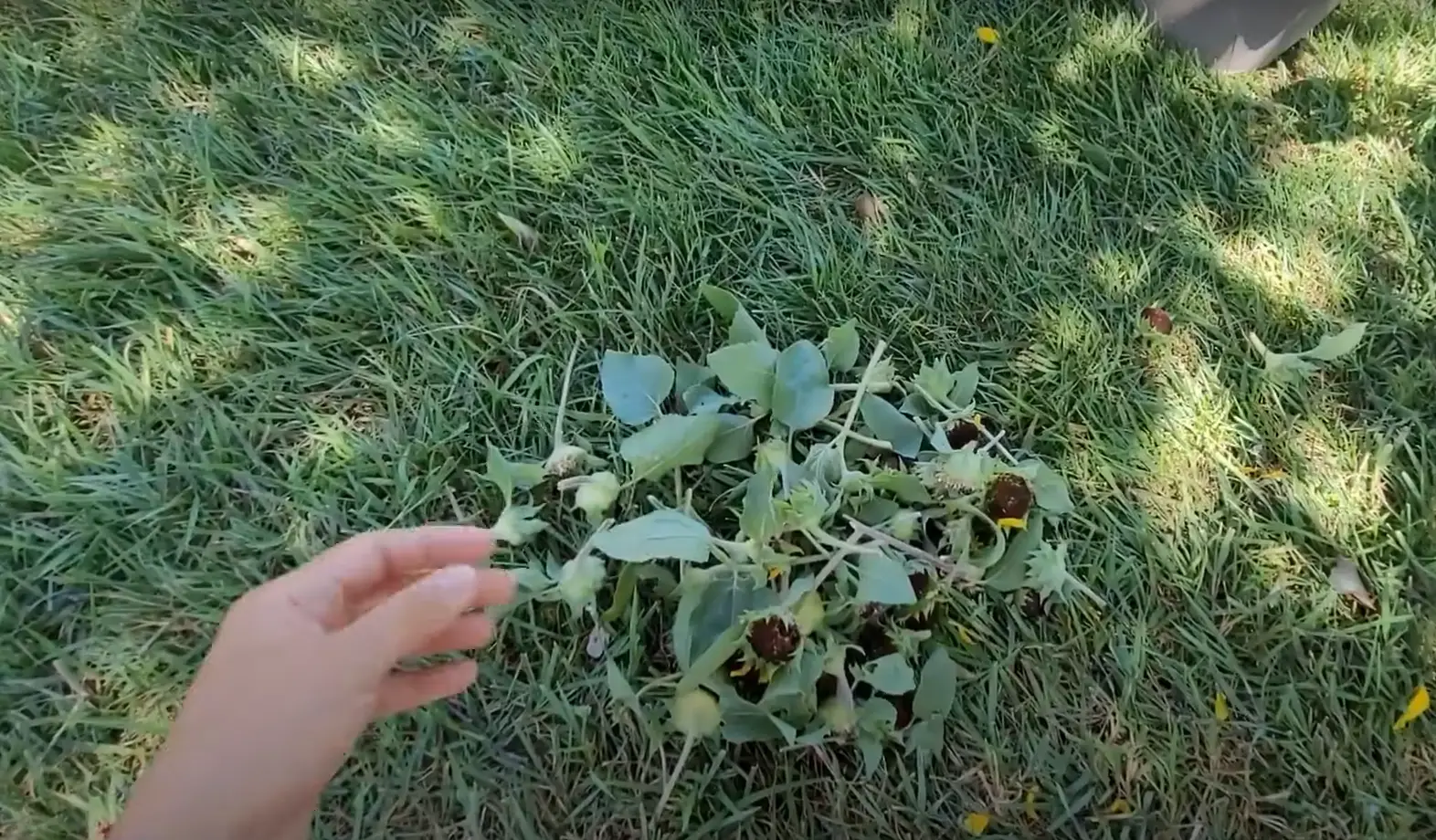


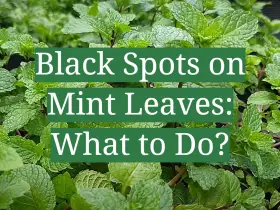
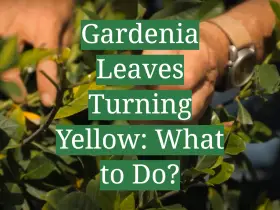
Leave a Reply
View Comments